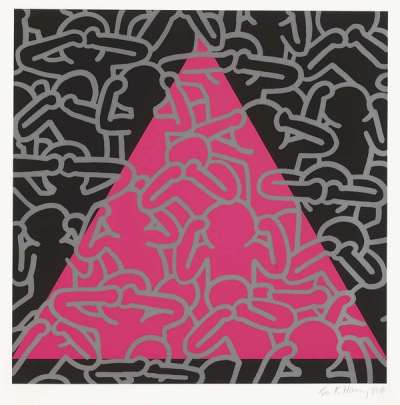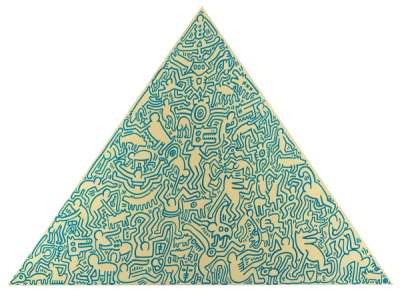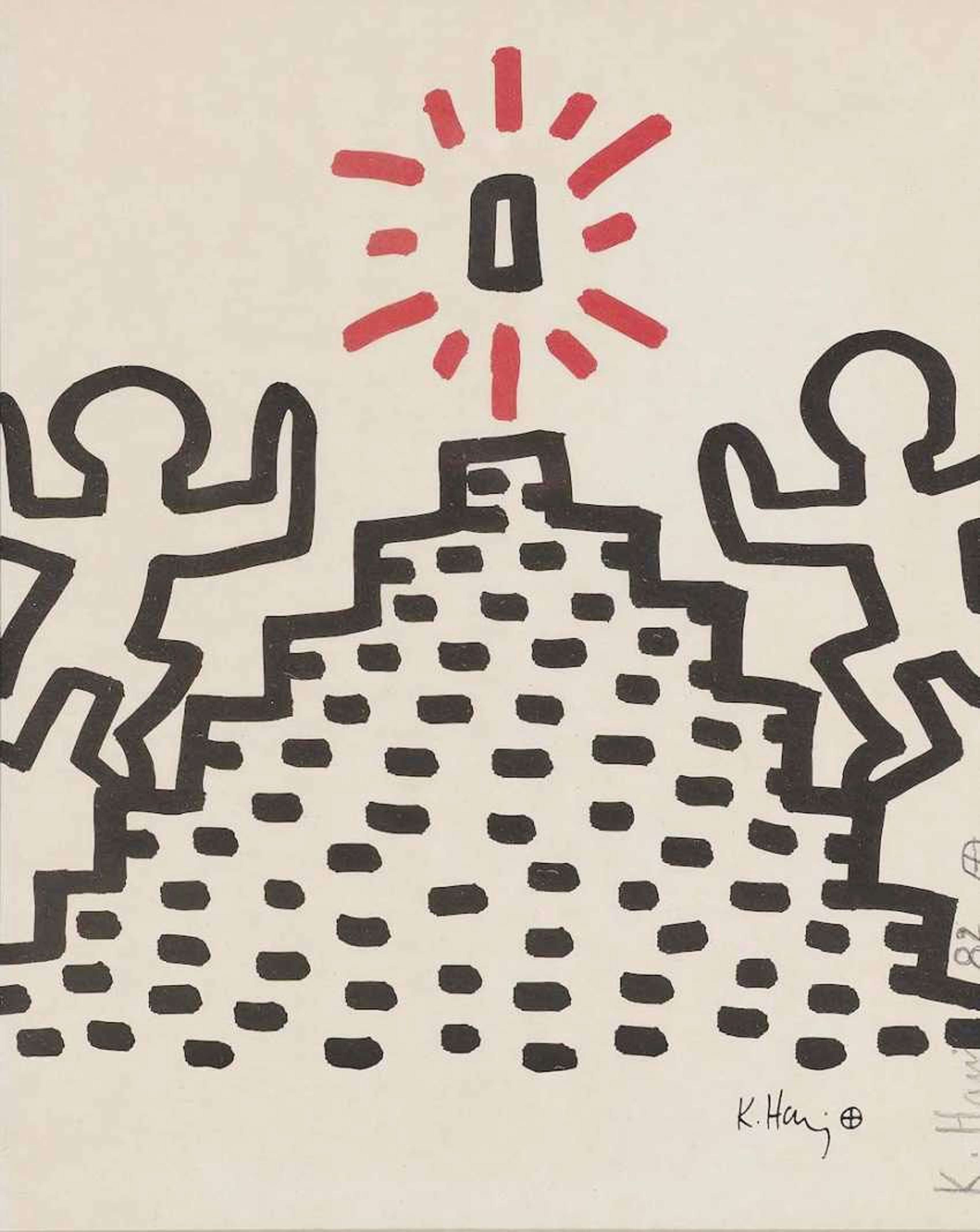Pyramids
Keith Haring’s The Pyramids collection epitomises his modern-day hieroglyphics. The pièce de résistance of the series, Silence Equals Death, features a pink triangle—the badge homosexuals were forced to wear in Nazi concentration camps—inverted in an act of reclamation common among gay activists in the 1980s.
Keith Haring Pyramids For sale
Pyramids Value (5 Years)
Works from the Pyramids series by Keith Haring have a strong market value presence, with 74 auction appearances. Top performing works have achieved standout auction results, with peak hammer prices of £60000. Over the past 12 months, average values across the series have ranged from £22687 to £60000. The series shows an average annual growth rate of 6.39%.
Pyramids Market value
Auction Results
| Artwork | Auction Date | Auction House | Return to Seller | Hammer Price | Buyer Paid |
|---|---|---|---|---|---|
 Silence Equals Death Keith Haring Signed Print | 22 Oct 2025 | Sotheby's New York | £23,800 | £28,000 | £40,000 |
 Pyramid (gold II) Keith Haring Signed Print | 22 May 2025 | Kloss Auction House | £19,550 | £23,000 | £29,000 |
 Pyramid (blue I) Keith Haring Signed Print | 4 Dec 2024 | Dorotheum, Vienna | £19,550 | £23,000 | £30,000 |
 Pyramid (gold I) Keith Haring Signed Print | 20 Jul 2024 | Mainichi Auction, Osaka | £29,750 | £35,000 | £40,000 |
 Pyramid (blue II) Keith Haring Signed Print | 25 May 2024 | SBI Art Auction | £23,800 | £28,000 | £35,000 |
Sell Your Art
with Us
with Us
Join Our Network of Collectors. Buy, Sell and Track Demand
Meaning & Analysis
Throughout his career, Keith Haring developed his own visual language based on simple and accessible imagery. Especially towards the end of his life, prior to his death from AIDS in 1990, Haring turned to Pyramids to articulate his pursuit of a universally-readable iconography. Populated by his iconic outlined figures, the works in our Pyramids collection testify to Haring's development of his own modern hieroglyphics.
Haring's pyramids pay homage to ancient civilisations and their championing of a visual language that can still be understood millenniums later. Since his early 'Subway Drawings', Haring likewise committed himself to reducing messages to simple imagery. In doing so, Haring articulated his messages of love, hope, and a relentless striving for socio-political change that could be understood as widely as possible. His works Pyramid (blue) and Pyramid (gold) are, respectfully, a monumental testament to the virtues and vices of humanity. Pyramid (gold) is decorated with a dizzying array of Haring's archetypal figures, morphing into gruesome beasts, painfully giving birth, and torturing one another. The work has been interpreted as a grave warning of the perils of sexual joy, something particularly poignant in Haring's work after his diagnosis with AIDS. Pyramid (blue), on the other hand, is similar in composition but depicts his outlined figures in joyous harmony. The works are universally legible; their moralistic overtones speaking to Haring's use of his art to illicit social change even in this precarious year of his life.
Haring's Pyramids were not only about creating modern hieroglyphics, but a nod to the eternal legacy he hoped to leave behind after his untimely death. Perhaps the pièce de résistance of his Pyramids, Silence Equals Death is one of Haring's oeuvre-defining works, and one of the artist's final pleas for the AIDS epidemic to be addressed before his death. Adapted from a poster produced by ACT UP, an organisation that tirelessly campaigned for an end to AIDS, Silence Equals Death was fittingly produced to raise funds for the AIDS Outreach Fund. The pink triangle at the centre of the work is an inversion of the badge homosexual men were forced to wear in Nazi concentration camps, and is a symbol reclaimed by gay activist groups throughout the 1980s. While the Nazi's upside down triangle symbolised homosexual men as being the most lowly group in society, Haring upturned the symbol into one of his Pyramids to suggest the greatness of the LGBTQ community and their hopes to extinguish AIDS. As the title of the work suggests, this was not the time to 'See no evil, Speak no evil, Hear no evil', and the pyramid emerged as an eye-catching appeal to the Reagan administration for AIDS visibility.
Haring's Pyramids are, therefore, an essential part of the his iconography as both artist and activist. As the backdrop for his modern hieroglyphics, Haring used these Pyramids to create a universal visual language that could be read by all, regardless of class, gender, race, and sexuality.
















